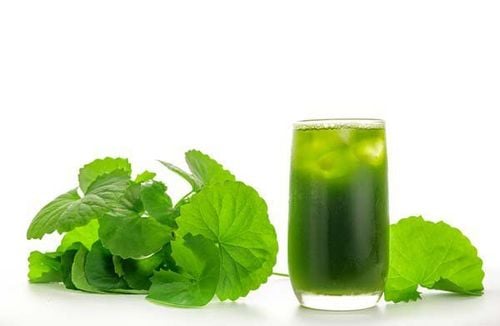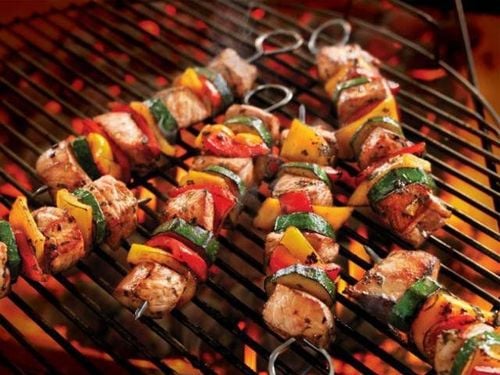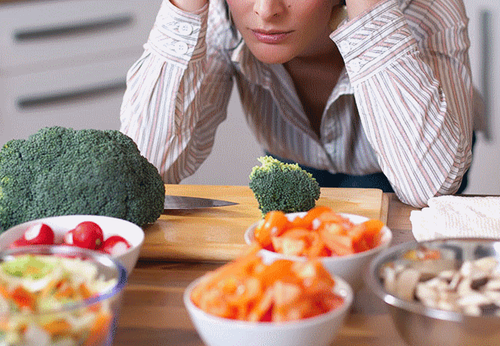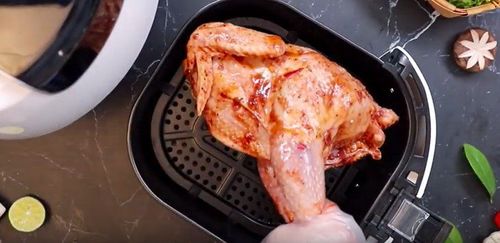This is an automatically translated article.
You can't tell if meat is cooked safely by looking at it. Any type of cooked, undercooked red meat, including pork, can remain pink, even after the meat has reached a safe internal temperature. Refer to the chart below and a food thermometer to make sure that meat, poultry, seafood, and other cooked foods reach a safe minimum internal temperature.1. Safe minimum cooking temperature chart overview
Foods including red meat, poultry, seafood and other cooked foods have different minimum temperatures that are invisible to the naked eye. Use the following temperature chart and food thermometer to know for sure that your dishes are done, and you can use them without worrying about whether the internal temperature is safe enough to use. , or hot enough to kill harmful germs that cause food poisoning. Besides, the minimum safe cooking chart is also very important in ensuring food hygiene and safety.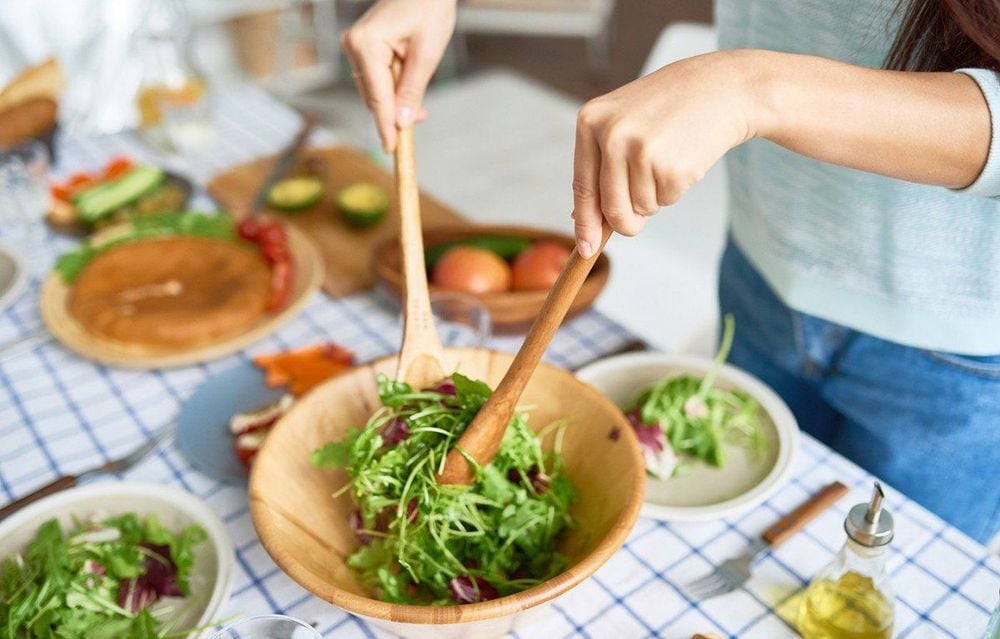
Các loại thực phẩm đều có mức nhiệt độ chín tối thiểu khác nhau mà mắt thường không thể nhìn thấy
2. How to use a food thermometer
Insert the thermometer into the thickest part of the meat, skewering to the center without touching any of the bones. With burgers, you insert a food thermometer through the side of the piece of bread. Check each piece of meat separately if you have a large piece of meat. If possible, use a digital thermometer for the most accurate results. Clean your food thermometer Clean your food thermometer in warm soapy water before each use Always wash your hands before and after you touch raw meat Wash your hands with soap and warm water for at least 15 seconds or Disinfect with hand sanitizer If you have used dishes or utensils to handle raw food, do not reuse them until you have thoroughly washed them. Use separate cutting boards for produce and raw meat. Use a paper towel to wipe down kitchen surfaces, or change dish towels daily. Avoid using sponges, as they are harder to keep bacteria out. Clean countertops, cutting boards, and utensils before and after preparing food. Keep cold and hot foods hot, so your food never reaches the "temperature danger zone" where bacteria can grow quickly and cause food poisoning.3. Food temperature chart
Beef, veal, lamb| Món ăn | Nhiệt độ |
| Thịt xay (bánh mì kẹp thịt, thịt viên, xúc xích) | 71 ° C |
| Cắt miếng và toàn bộ |
63 ° C 71 ° C 77 ° C |
|
Thịt bò và thịt bê được làm mềm bằng cơ học (lật miếng thịt bò được làm mềm bằng cơ học ít nhất hai lần trong khi nấu) Thời gian để nguội : 3 phút |
63 ° C |
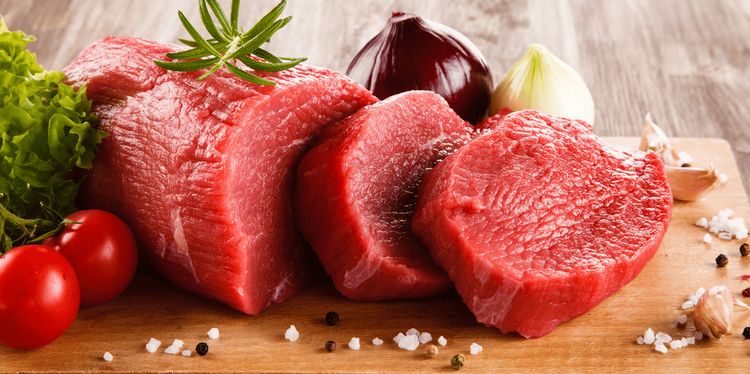
Trong lúc chế biến, thịt bò sẽ chín ở nhiệt độ 63 ° C và cần được để nguội 3 phút
| Món ăn | Nhiệt độ |
| Thịt lợn xay (bánh mì kẹp thịt, thịt viên, xúc xích) | 71 ° C |
|
Cắt miếng và toàn bộ Thời gian để nguội : 3 phút |
71 ° C |
| Món ăn | Nhiệt độ |
| Gia cầm xay (bánh mì kẹp thịt, thịt viên, xúc xích) | 74 ° C |
| Các sản phẩm gà tẩm bột sống đông lạnh (cốm, ngón, dải, bánh mì kẹp thịt) | 74 ° C |
| Bộ phận (cánh, ngực, chân, đùi) | 74 ° C |
| Nhồi (nấu một mình hoặc nấu trong chim) | 74 ° C |
| Toàn bộ | 82 ° C |
| Món ăn | Nhiệt độ |
|
Món trứng Trứng luộc |
74 ° C (nấu cho đến món trứng còn lòng đỏ và lòng trắng cứng lại) |
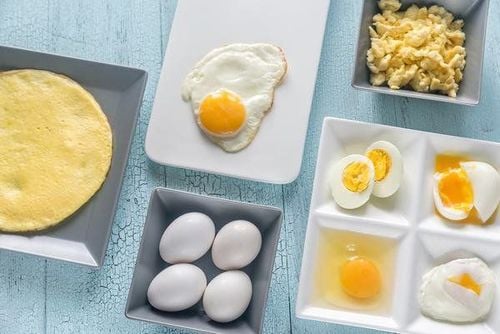
Món trứng sẽ chín ở nhiệt độ là 74 ° C
| Món ăn | Nhiệt độ |
| Cá | 70 ° C (nấu cho đến khi thịt đục và dễ dàng tách ra bằng nĩa) |
|
Động vật có vỏ (tôm, tôm hùm, cua, sò điệp, nghêu, trai, sò) |
74 ° C Nấu cho đến khi thịt có màu trắng như ngọc trai hoặc trắng đục Bỏ bất kỳ con nào không mở khi nấu chín |
| Món ăn | Nhiệt độ |
| Thức ăn thừa và thịt hầm | 74 ° C |
| Món ăn | Nhiệt độ |
| Thịt xay, hỗn hợp thịt, thịt nai xay và xúc xích | 74 ° C |
| Hươu, nai sừng tấm, nai sừng tấm, tuần lộc, linh dương | 74 ° C |
| Động vật lớn (Gấu, bò rừng, bò xạ hương, hải mã, v.v.) | 74 ° C |
| Động vật nhỏ (Thỏ, chuột xạ hương, hải ly, v.v.) | 74 ° C |
| Món ăn | Nhiệt độ |
| Nguyên con | 82 ° C |
| Ức | 74 ° C |
| Đùi, cánh | 74 ° C |
| Nhồi (nấu một mình hoặc nấu trong chim) | 74 ° C |
Please dial HOTLINE for more information or register for an appointment HERE. Download MyVinmec app to make appointments faster and to manage your bookings easily.
Reference source: foodsafety.gov; canada.ca



